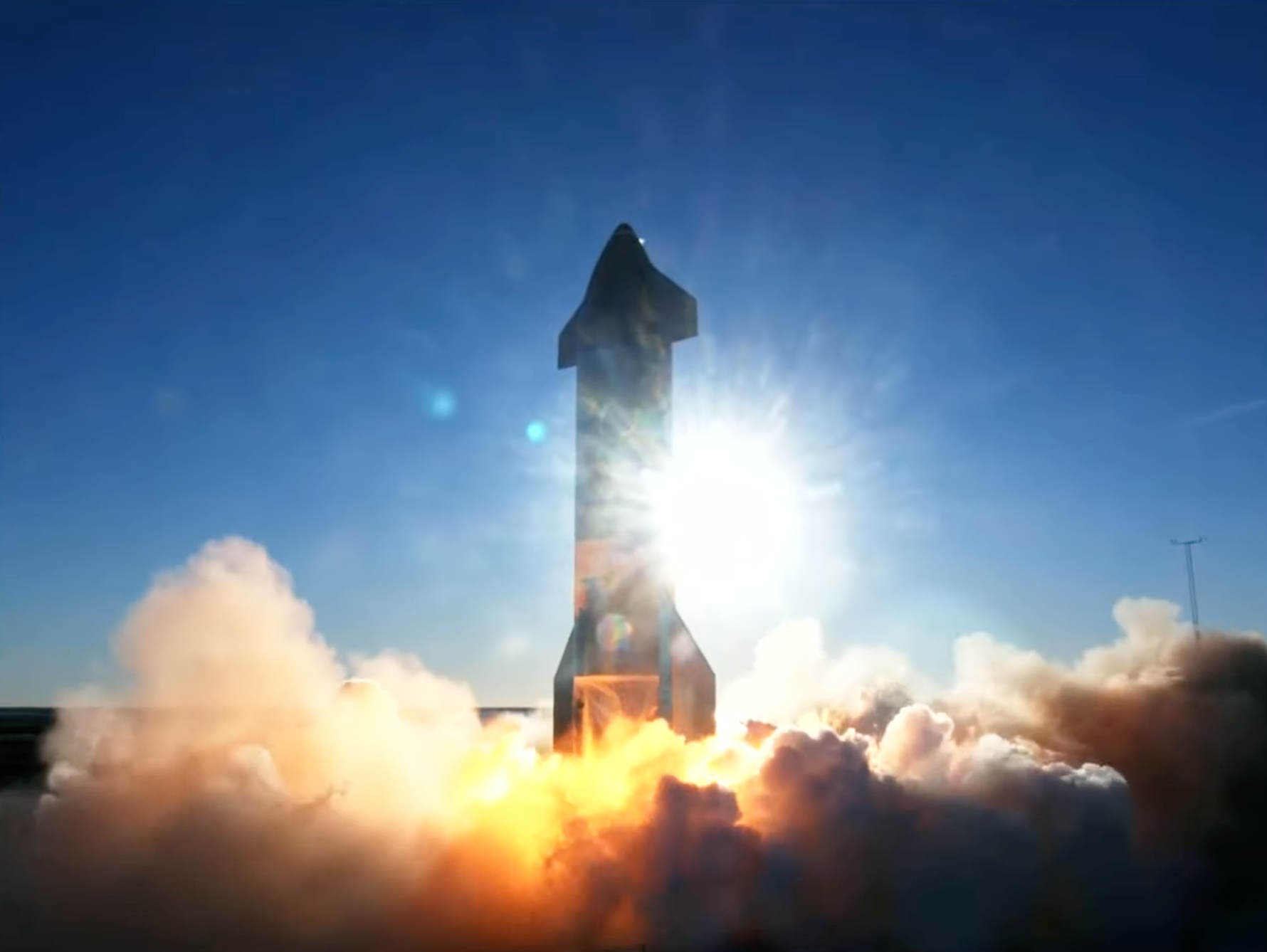SpaceX’s Starship flew a record 12.5 km into the air—and then crashed

SpaceX today pulled off the first ever high-altitude (well, high-ish) flight of Starship, the rocket the company hopes will one day take humans to the moon and Mars. Although the spacecraft failed to make a safe landing—in fact, it exploded on impact—it’s the highest any Starship prototype has flown. Still well short of orbit, though, which is at least 160 kilometers (100 miles) up.
What happened: At around 4:40 p.m. US Central Time, Starship lifted off from the company’s test facility at Boca Chica, Texas. It reached a height of 12.5 kilometers and then descended in an attempt to land. But it came down too quickly and crashed, leaving smoldering wreckage. Total time in the air: 6 minutes and 42 seconds.
This is the company’s eighth prototype of Starship (dubbed SN8). It flew substantially higher than the 150-meter “hop” the fifth iteration made in August and the sixth made in September—each with only one engine. (SN7 didn't fly; it was exploded deliberately as part of a pressure test.) SpaceX founder Elon Musk had previously estimated only a one-third chance of success that SN8, armed with three engines, would safely fly and land.
A giant among rockets: SpaceX first unveiled Starship to the world in September 2019, on the 11th anniversary of the company’s first rocket launch. It’s a behemoth, standing over 50 meters tall, and weighs over 1,400 tons (1,270 metric tons) when loaded with fuel. In its final form, the vehicle will double as a six-engine, second-stage booster that sits on top of a giant first-stage booster, the Super Heavy (currently under development). It will carry more than 100 tons of cargo and passengers to deep-space destinations.
Like the company’s other major space vehicles, Starship is designed to be reusable, to lower the overall cost of spaceflight for robotic and crewed missions alike.
What’s next: Musk has hinted on Twitter that the next two prototypes, SN9 and SN10, will also fly rather than be used for ground testing, but there have been no clues as to when. The company did not try to get Starship into orbit this year but will likely try in 2021. Musk said in early December that he was “highly confident” SpaceX would send people to to Mars in 2026, or even in 2024 “if we get lucky.”
Deep Dive
Space
The search for extraterrestrial life is targeting Jupiter’s icy moon Europa
NASA’s Europa Clipper mission will travel to one of Jupiter's largest moons to look for evidence of conditions that could support life.
How to safely watch and photograph the total solar eclipse
The solar eclipse this Monday, April 8, will be visible to millions. Here’s how to make the most of your experience.
How scientists are using quantum squeezing to push the limits of their sensors
Fuzziness may rule the quantum realm, but it can be manipulated to our advantage.
Stay connected
Get the latest updates from
MIT Technology Review
Discover special offers, top stories, upcoming events, and more.